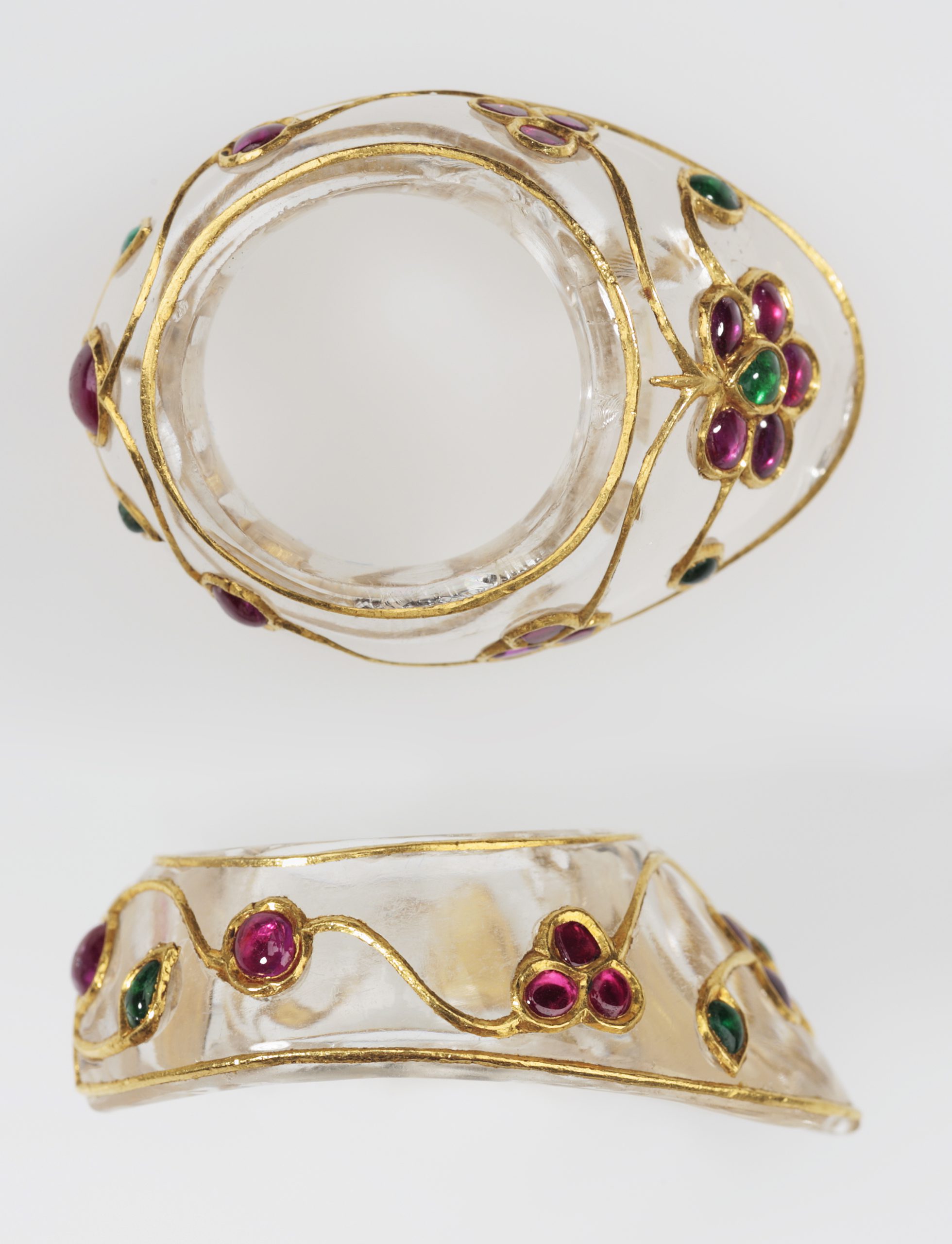 Print Page
Print Page
 Print Page
Print Page
Location: Mughal India
Materials: rock crystal, set with foiled rubies and emeralds in gold kundan
Dimensions: 4.2cm (height)
Accession Number: JLY 1123
Other Notes:
Asymmetrical thumb-rings were used in Islam from at least the 14th century to protect the archer’s thumb when shooting arrows with a composite bow. Many extant thumb-rings, however, were not for use but display, and are shown, for example, suspended on silk strings from the belts of Jahangir and other Mughal emperors. This ring is of this type: friction from the bowstring would have damaged the settings, while the jewelled settings would have impeded the loosening of the string.
Bibliography:
M. Wenzel, Ornament and Amulet. Rings of the Islamic World, The Nasser D. Khalili Collection of Islamic Art, volume XVI, London 1993, cat.477, pp.150–51, 267.
P. Moura Carvalho, Gems and Jewels of Mughal India. Jewelled and enamelled objects from the 16th to 20th centuries, The Nasser D. Khalili Collection of Islamic Art, volume XVIII, London 2010, cat.40. p.99.
J.M. Rogers, The Arts of Islam. Masterpieces from the Khalili Collection, London 2010, cat.439, p.367.
